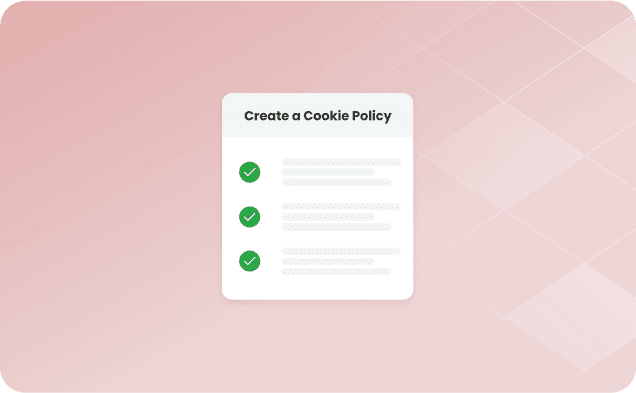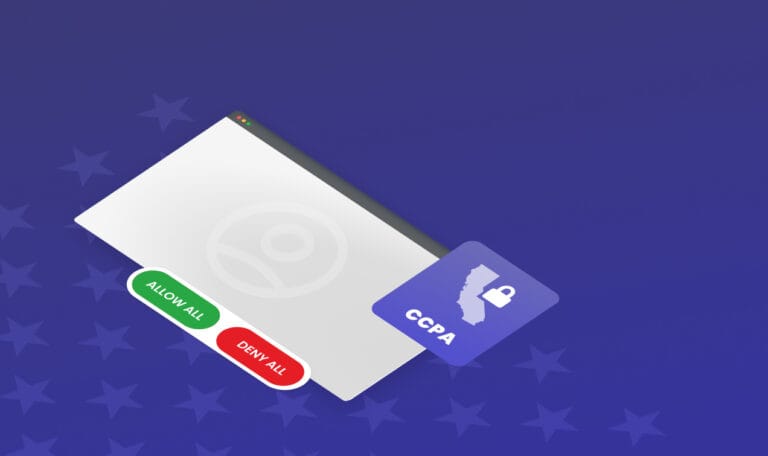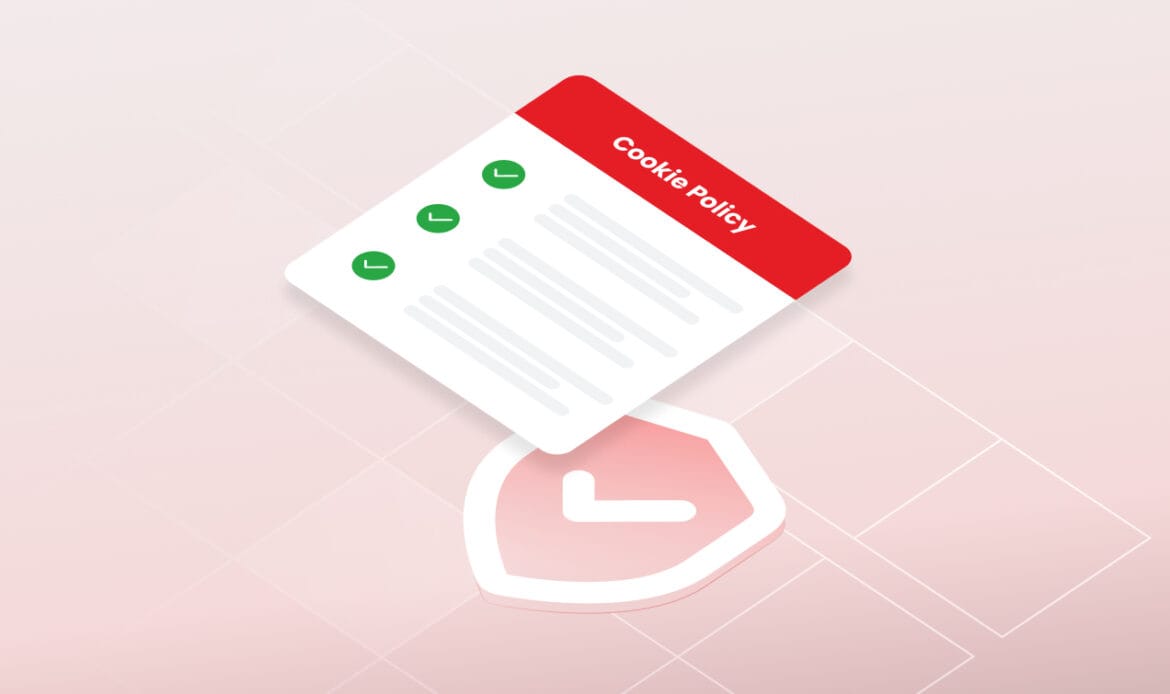A cookie policy isn’t just a nice-to-have; it’s essential. Privacy regulations like the GDPR and CCPA require websites to disclose their cookie practices, and a transparent cookie policy builds trust with your users by explaining how their data is used. If you’re unsure where to start, this guide will walk you through the steps to create a comprehensive cookie policy tailored to your website’s needs.
Creating a cookie policy might seem daunting, especially with the legal complexities involved. However, with the right tools—like CookieHub’s Cookie Scanner—you can streamline the process, ensuring accuracy, compliance, and clarity.
Why You Need a Cookie Policy
A cookie policy is a document that informs users about the cookies your website uses, why they’re used, and how they impact users’ privacy. It typically explains:
- What cookies are and their purpose on your site
- Categories of cookies (functional, analytics, and marketing)
- Options for users to manage their cookie preferences
A well-crafted cookie policy not only helps with compliance but also enhances transparency, reassuring users about how their data is handled.
Step 1: Understand What Cookies Are
Before drafting a cookie policy, it’s essential to know what cookies are and why they’re used on websites. Cookies are small data files placed on users’ devices to remember them and enhance their experience. They’re categorized primarily as:
- First-Party Cookies: Set directly by your website, they help with essential functions, such as remembering login details or personalizing content.
- Third-Party Cookies: These are created by external domains and are often used for tracking and advertising purposes. They allow third-party advertisers to track users across multiple sites to deliver personalized ads.
A cookie policy will distinguish between these types, making it clear to users which cookies come from your website and which come from third parties. For more on cookie types, see our article on first and third-party cookies.

Step 2: Use a Cookie Scanner to Identify Your Cookies
One of the most time-consuming parts of creating a cookie policy is manually identifying each cookie your website uses. But with CookieHub’s Cookie Scanner, you can automate this process.
Our Cookie Scanner quickly scans your website, identifying all cookies and categorizing them based on their purpose, duration, and provider. This gives you a complete list of cookies to include in your cookie policy, making the entire process faster and more accurate.
Step 3: Structure Your Cookie Policy
A well-structured cookie policy makes it easy for
users to understand your cookie practices. Here’s a breakdown of essential
sections:
1. Introduction
Briefly explain what cookies are and why your website uses them. This section sets the tone for transparency, giving users a quick overview before diving into specifics.
2. Types of Cookies Used
Use clear headings to explain each type of cookie used on your site. Typically, you’ll have:
- Necessary cookies: Necessary for website functionality, such as user logins or shopping cart persistence.
- Analytical Cookies: Collect data on user behavior, allowing you to optimize your site’s performance.
- Marketing Cookies: Used for tracking users across different sites to deliver personalized ads.
3. Cookie Table
This is a detailed list of each cookie, including its name, type, purpose, provider, and duration. CookieHub’s Cookie Scanner can generate this table for you, making it easy to keep this section updated.

Are you compliant?
Our completely free tool will generate a detailed list of all cookies currently in use, along with valuable information about their purpose.
To see an example of a cookie table, check out CookieHub’s Cookie Declaration.
4. User Consent and Preferences
Explain how users can manage their cookie preferences, especially for non-essential cookies. CookieHub’s Consent Management Platform integrates seamlessly, allowing users to adjust their cookie settings.
Step 4: Ensure Compliance with Privacy Laws
A cookie policy must comply with regulations like the GDPR, CCPA, and other data privacy laws relevant to your users’ regions. Here’s a quick overview of requirements for some key laws:
- GDPR (EU): Requires user consent for all cookies except essential ones and mandates transparency in explaining cookie practices.
- CCPA (California, USA): Focuses on user rights to opt out of data selling and emphasizes transparency.
- Other Local Laws: Some countries or regions have specific cookie requirements, so ensure your cookie policy meets all necessary standards.
Our blog post on Do I Need a Cookie Banner? provides insights on when and why a cookie banner is essential for compliance.
With CookieHub’s Cookie Scanner and consent management tools, you can maintain compliance across jurisdictions, updating your policy as regulations change.

Step 5: Make Your Cookie Policy Accessible and Easy to Understand
Transparency is vital for building trust, so make your cookie policy easy to find and understand. Avoid technical jargon, and use clear language that explains the purpose of each cookie in straightforward terms. Place a link to your cookie policy in your website’s footer or privacy settings menu, and make sure it’s accessible on all pages where cookies are used.
Using CookieHub’s tools, you can provide users with an overview of your cookie practices, enabling them to make informed decisions about their data.
Step 6: Regularly Update Your Cookie Policy
A cookie policy isn’t a one-and-done document. Cookies, regulations, and tracking technologies change frequently, so it’s essential to review your policy regularly. With CookieHub’s Cookie Scanner, you can rescan your site periodically to detect any new cookies and adjust your policy accordingly.
This proactive approach ensures your cookie policy is always accurate, reflecting any updates in tracking technologies or privacy regulations.
Simplify Cookie Compliance with CookieHub
With CookieHub’s tools, creating and maintaining a cookie policy has never been easier. Our Cookie Scanner identifies cookies in use on your site, generates a tailored cookie policy, and keeps it updated. Additionally, CookieHub’s customizable Consent Management Platform provides a user-friendly way to manage consent, enhancing both compliance and user experience.
Ready to streamline your cookie compliance? Try out our Cookie Scanner today and create a cookie policy that ensures your website is transparent, user-friendly, and compliant.
Cookie Scanner
CookieHub automatically scans your website to detect cookies, ensuring all cookies are easily managed.
Scalability
Stay on the right side of the world’s data privacy laws reliably and cost-effectively, with CookieHub.
To find out more about our consent management solutions, you can contact us here.
